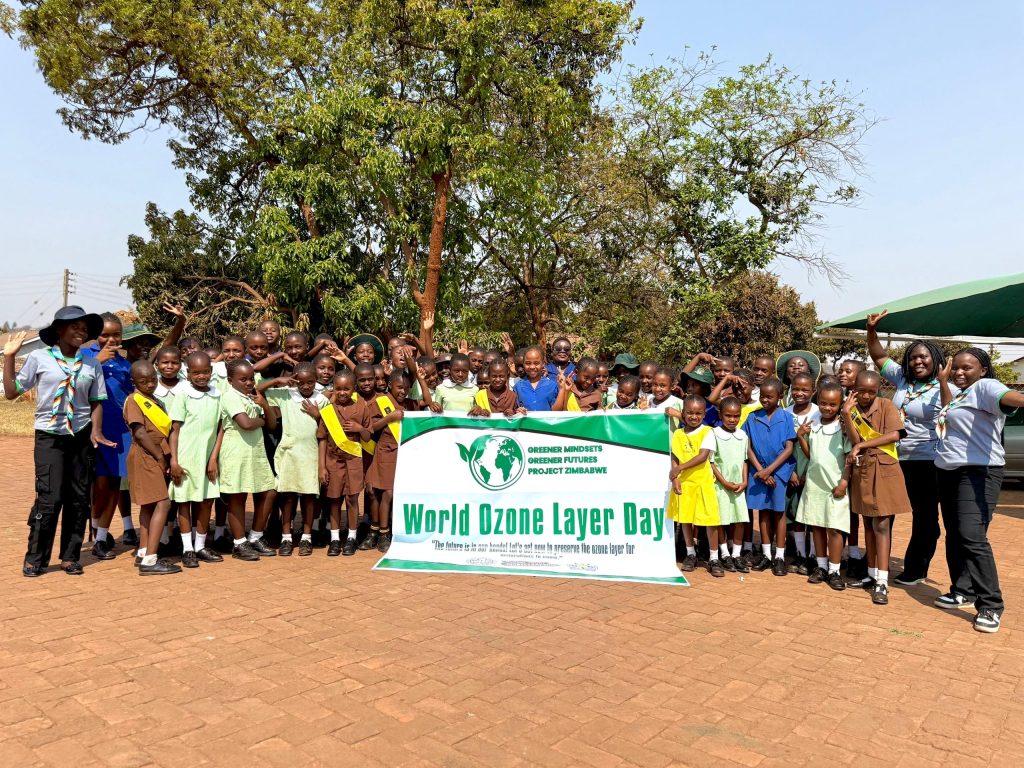How Zimbabwean Girls Are Writing a New Chapter in the Ozone Story
How Zimbabwean Girls Are Writing a New Chapter in the Ozone Story
Today the 16th of September, we celebrate International Ozone Layer Day, a moment to reflect on a remarkable story of global cooperation and a critical reminder of our ongoing responsibility to protect our planet. For those of us who may be a bit lost, think of the ozone layer as Earth’s very own sunscreen, a thin shield high in the atmosphere that protects us all from the sun’s most harmful rays. For us here in Zimbabwe, where we experience plenty of sunshine, this protective shield is vital for our health and our way of life.
For years, chemicals made by us humans such as those found in old fridges, air conditioners, and aerosol sprays were creating a “hole” in this shield. Nevertheless, the good news is, we came together to fix it through signing international agreements phasing them out showing how a global problem can be solved when countries and communities act together. This year’s commemoration theme, links the health of our planet’s protective shield to the fundamental human rights of its people. For us in Zimbabwe, this theme hits close to home, particularly at the intersection of gender and climate.
The fight to protect our environment, from the atmosphere above to the soil beneath our feet, is also a fight for human rights and a more equitable future. Climate change and environmental degradation disproportionately affect those who have the least say in policy decisions—a reality that often impacts girls and young women most. Their access to education, health, and a safe environment can be compromised by a changing climate. When our climate is threatened by drought or extreme weather, it’s often girls who face the biggest burdens, from water collection to securing food for their families. A damaged ozone layer and a changing climate are not just environmental issues; they are issues of justice, health, and opportunity.
All hope is not lost though, a new narrative is taking root, one where these young people are not just victims, but powerful agents of change. This is the story of the Girl Guides Association of Zimbabwe’s (GGAZ) “Greener Mindsets, Greener Future” project. This groundbreaking initiative is putting girls at the heart of climate action across Zimbabwe, proving that when girls lead, communities thrive. Instead of waiting for others to act, our project is putting girls and young women at the heart of the solution. They are the new generation of climate advocates, turning knowledge into action. Through tree planting, clean-up drives, and community-wide education sessions, over 2800 young people are showing that every tree planted and every piece of waste recycled is a step towards a healthier and more resilient Zimbabwe. Just as the world came together to protect the ozone layer, our project shows how, when girls lead, families, schools, and communities grow greener and more resilient, proving that a small, local act can have a big, global impact.
So, how can you help? Being a climate champion in your own backyard is the key. You can support local recycling initiatives, like the ones our Girl Guides are leading, to ensure old appliances are disposed of responsibly. You can also be mindful of the products you buy, choosing those that are ozone-friendly. Every small step—from planting a tree to reduce carbon emissions to simply switching off lights—is part of a larger, global effort to protect both the ozone layer and our climate. This International Ozone Layer Day, let’s celebrate our collective progress and pledge to continue working together for a healthier, greener future for all Zimbabweans.
Written by Lucia Ruvarashe Ndanga.



